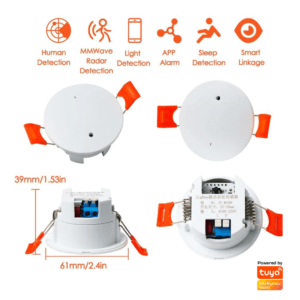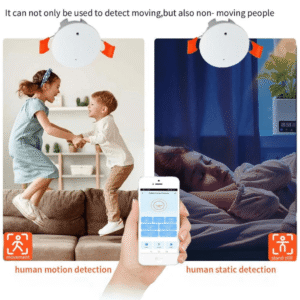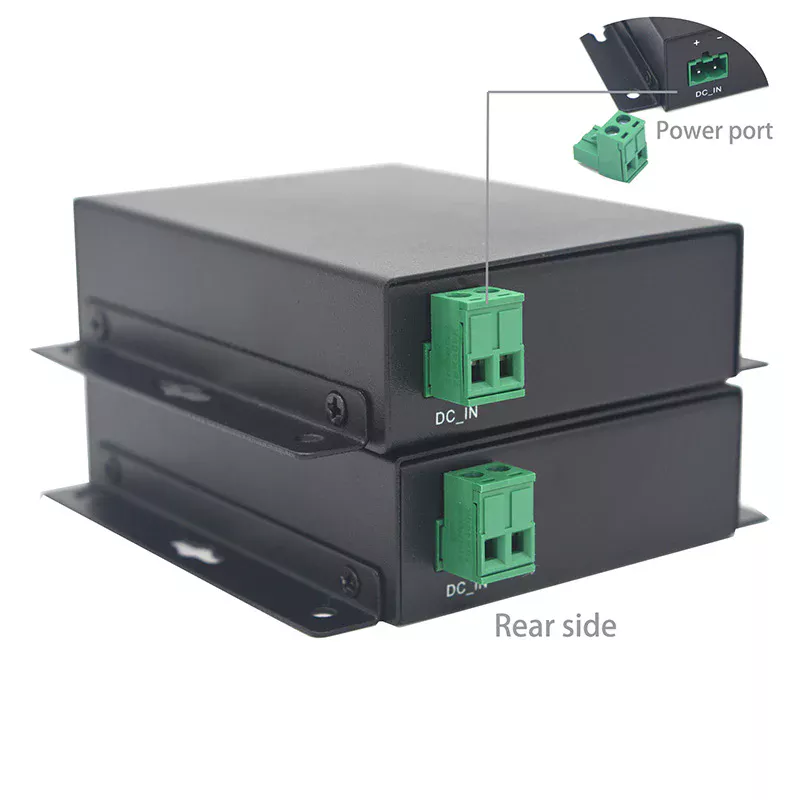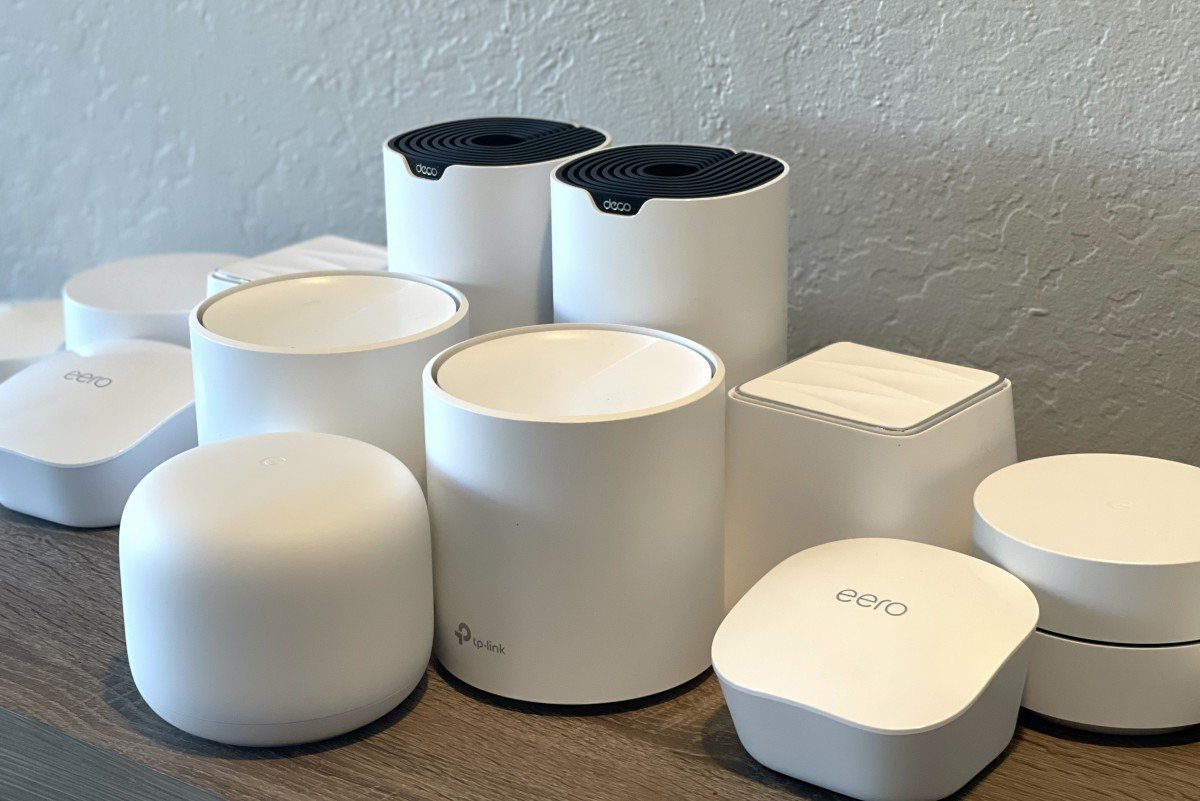Have you ever wondered if your smart lights can do more than just turn on and off? Imagine a home where lights know when you enter a room and switch on automatically, saving you time and energy.
But can smart lights really detect your presence? If you want to make your living space smarter and more efficient, understanding how these lights sense movement is key. Keep reading to discover the surprising ways smart lights can recognize you and transform your everyday life.

Credit: techbuzzireland.com
How Smart Lights Work
Smart lights use technology to turn on or off by sensing people. They adjust lighting without manual control.
These lights make homes safer and save energy by working only when needed.
Sensors Behind Smart Detection
Smart lights use sensors to detect presence. These sensors spot motion or heat from people nearby.
Common sensors include infrared and motion detectors. They help lights know when to switch on or off.
- Infrared sensors detect body heat
- Motion sensors sense movement
- Ultrasonic sensors use sound waves
Types Of Presence Detection
Smart lights detect presence using different methods. Each method works best in certain places.
Some detect movement, while others sense heat or sound. This helps lights react correctly.
- Passive Infrared (PIR) senses body heat changes
- Microwave sensors detect motion through waves
- Ultrasonic sensors listen for movement sounds
- Camera-based detection uses images to find people
Integration With Home Systems
Smart lights connect with home devices like phones and speakers. This allows easy control.
They can link with security or heating systems to work together. This makes homes smarter and safer.
- Control lights with smartphones or voice commands
- Sync with security cameras for better monitoring
- Work with thermostats to save energy
- Connect to smart hubs for unified control
Presence Detection Technologies
Smart lights can detect when people are in a room. This helps save energy and adds convenience.
Different technologies help smart lights sense presence. Each type works in a unique way.
Motion Sensors
Motion sensors detect movement in a space. They use waves or signals to spot changes.
When motion is found, the smart light turns on. If no motion is detected, the light switches off.
Infrared Sensors
Infrared sensors detect body heat from people nearby. They sense warm objects in the room.
These sensors work well in dark rooms. They do not need visible light to detect presence.
Ultrasonic Sensors
Ultrasonic sensors send sound waves that humans cannot hear. They measure how waves bounce back.
If the waves change direction or time, the sensor knows something moved. This triggers the light.
Camera-based Detection
Camera-based systems use images or video to detect people. They analyze shapes and movement.
These systems can be very accurate. They may also recognize faces or count people in a room.
Benefits Of Presence Detection In Smart Lights
Smart lights can detect when someone is in the room. This feature helps save energy and adds safety. It also makes life easier by automating lighting.
Presence detection uses sensors to notice movement or heat. The lights turn on or off based on this information. This technology brings many useful benefits.
Energy Efficiency
Smart lights with presence detection only use power when needed. They turn off automatically when no one is in the room. This cuts down on wasted electricity.
Using less electricity lowers energy bills and helps the environment. Presence detection makes lighting smarter and more efficient.
- Lights switch off in empty rooms
- Reduces unnecessary power use
- Helps save money on electricity
- Supports green energy practices
Enhanced Security
Presence detection can improve home and office security. Lights turn on when someone enters, which can scare off intruders. This makes your space safer at night.
The system can also alert you if unexpected motion is detected. This feature adds an extra layer of protection to your property.
- Lights activate with movement
- Deters unwanted visitors
- Alerts for unusual activity
- Increases safety during dark hours
Convenience And Automation
Presence detection makes using lights more convenient. You don’t need to find switches in the dark. Lights turn on and off automatically as you move.
This technology fits well with home automation systems. It can work with other smart devices for a smoother daily routine.
- Hands-free light control
- Works with smart home systems
- Improves comfort and ease
- Supports custom lighting schedules
Common Use Cases
Smart lights can detect when people enter or leave a space. This helps save energy and improve convenience.
Many places use smart lights with presence detection. These include homes, offices, and outdoor areas.
Home Lighting Automation
Smart lights in homes turn on when someone enters a room. They turn off after the room is empty for a while.
This makes life easier and cuts down electricity bills. Lights can also adjust brightness based on presence.
- Hallways light up only when walked through
- Living rooms brighten when people arrive
- Bathrooms use motion sensors for safety at night
Office And Commercial Spaces
In offices, smart lights help reduce energy waste. Lights turn off automatically in empty meeting rooms.
Stores and commercial buildings use presence detection for better customer experience. It also lowers costs.
- Conference rooms light up when people enter
- Workspaces adjust lighting for comfort and focus
- Restrooms and corridors light only when occupied
Outdoor And Security Lighting
Smart outdoor lights turn on when they sense movement nearby. This helps save energy and improves safety.
Security lights can alert homeowners about visitors or intruders. They work well in driveways and gardens.
- Driveway lights activate when cars approach
- Porch lights turn on when someone walks near
- Garden lights brighten only when needed
Setting Up Smart Presence Detection
Smart lights can detect when someone is in a room. This helps save energy and adds convenience. Setting up presence detection is simple if you follow some key steps.
This guide explains how to choose devices, install them, and adjust settings for best results.
Choosing Compatible Devices
Not all smart lights detect presence. Look for devices with built-in motion or occupancy sensors. Make sure they work with your home system.
Check if the lights support your smart home hub or app. This makes setup easier and controls smoother.
- Pick lights with motion or occupancy sensors
- Confirm compatibility with your smart hub
- Choose devices that fit your room size
Installation Tips
Place smart lights where they can clearly sense movement. Avoid areas blocked by furniture or curtains. Position sensors to cover main room entrances.
Follow the manufacturer’s instructions for wiring or pairing devices. Test each light after installation to check if it detects presence correctly.
- Mount sensors in open spaces
- Avoid obstacles that block the sensor view
- Test detection after installation
Configuring Sensitivity And Zones
Adjust sensitivity so lights turn on only when needed. Too high sensitivity may cause false triggers. Too low may miss presence.
Set detection zones to cover key areas like doors and walkways. Some apps let you customize these zones for better control.
- Set sensitivity to balance detection and false alarms
- Create zones covering main activity areas
- Use app settings to fine-tune zones and timing

Credit: www.ebay.ca
Limitations And Challenges
Smart lights can detect when someone is nearby to turn on or off. This feature saves energy and adds convenience. Still, these systems face some problems that affect their performance.
Understanding these limits helps users know what to expect and how to use smart lights better.
False Positives And Negatives
Smart lights sometimes turn on when no one is there. This is a false positive. It wastes energy and can be annoying.
False negatives happen when the lights do not turn on even if someone is present. This can cause inconvenience and safety issues.
- Pets or moving objects may trigger false positives.
- Slow or small movements might not be detected, causing false negatives.
- Sensor placement affects accuracy.
Privacy Concerns
Smart lights use sensors to detect presence. These sensors can collect data about movements inside a home.
Some people worry about how this data is stored and used. It is important to check the privacy settings and policies of smart light systems.
- Data might be shared with third parties.
- Unauthorized access could risk user privacy.
- Users should choose systems with strong privacy controls.
Cost And Compatibility Issues
Smart lights with presence detection can be more expensive than regular lights. The cost may limit who can afford them.
Not all smart lights work with every home system. Compatibility problems can make setup hard or stop features from working well.
- Extra sensors increase price.
- Older homes may lack compatible wiring.
- Some smart lights need specific hubs or apps.
- Check compatibility before buying.
Future Trends In Smart Detection
Smart lights are becoming more advanced in detecting presence. This helps save energy and improve convenience in homes.
Future trends will make smart detection more accurate and connected with other devices.
Ai And Machine Learning Integration
Smart lights will use AI to learn user habits over time. This helps the lights respond better to presence.
Machine learning allows lights to predict when someone will enter a room. This makes detection faster and smarter.
- AI adapts to different lighting needs
- Machine learning improves detection accuracy
- Lights can customize settings automatically
Improved Sensor Accuracy
Sensor technology will get better at detecting small movements and body heat. This reduces false triggers.
New sensors can work in dark or bright rooms. They will also detect presence through obstacles like furniture.
- Higher sensitivity to motion and heat
- Works in different lighting conditions
- Detects presence through barriers
Expanded Smart Home Ecosystems
Smart lights will connect with more home devices. This allows better coordination and control across the house.
Presence detection can trigger other actions. For example, adjusting thermostats or locking doors when no one is home.
- Integration with security cameras
- Works with smart thermostats and locks
- Creates seamless home automation

Credit: omnicloudsolutions.com
Frequently Asked Questions
How Do Smart Lights Detect Presence?
Smart lights use motion sensors or infrared technology to detect movement. They turn on or adjust brightness automatically when someone is nearby, enhancing convenience and energy efficiency.
Can Smart Lights Distinguish Between People And Pets?
Most smart lights detect general motion and cannot differentiate between humans and pets. Advanced systems may use AI, but basic models respond to any movement in their range.
What Are The Benefits Of Presence-detecting Smart Lights?
Presence-detecting lights save energy by turning off when rooms are empty. They also improve home security and add convenience by automating lighting based on occupancy.
Do Smart Lights Work Without Internet Connection?
Yes, many smart lights can detect presence and operate without internet. However, internet enables remote control and integration with other smart home devices for added functionality.
Conclusion
Smart lights add convenience to daily life. They can detect presence effectively. This feature enhances home security and energy efficiency. Users save on electricity bills. Smart lights offer a hands-free experience. They seamlessly integrate with other smart devices. Easy setup makes them user-friendly.
Compatibility with voice assistants adds flexibility. Users can customize settings to fit their needs. Choose smart lights for a modern home upgrade. Experience the benefits of smart technology today.
18 min read








